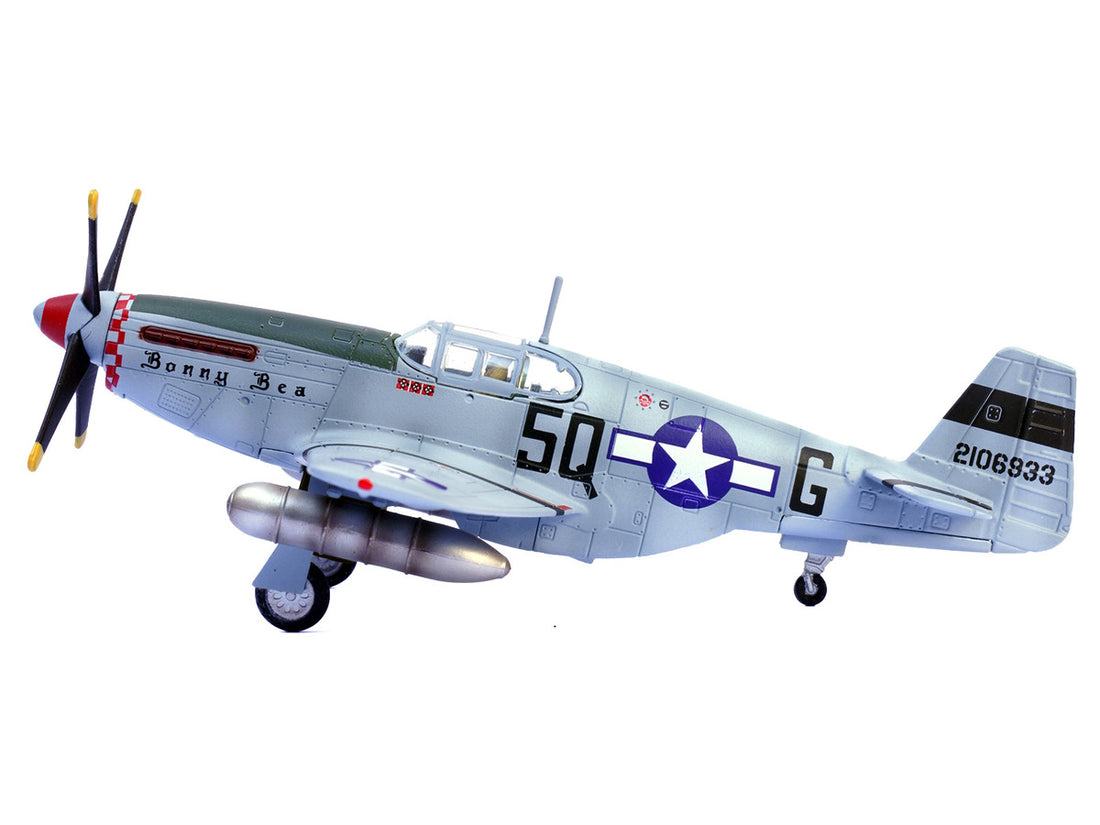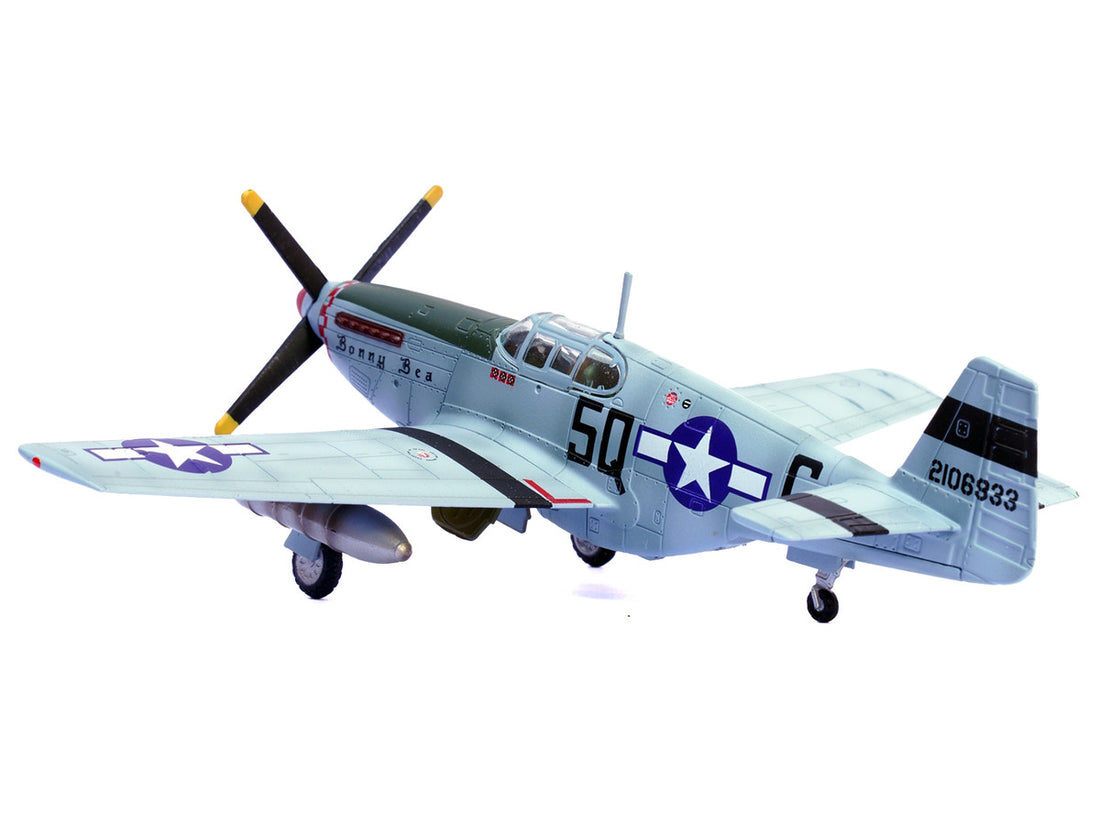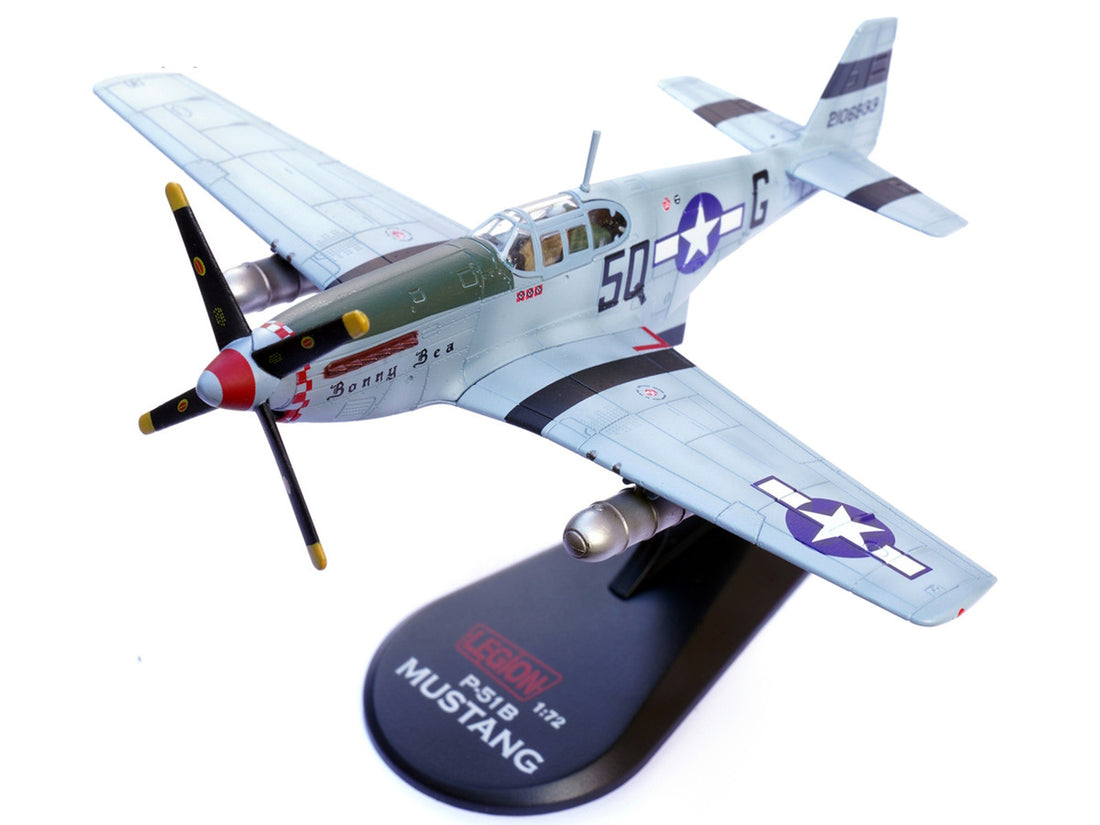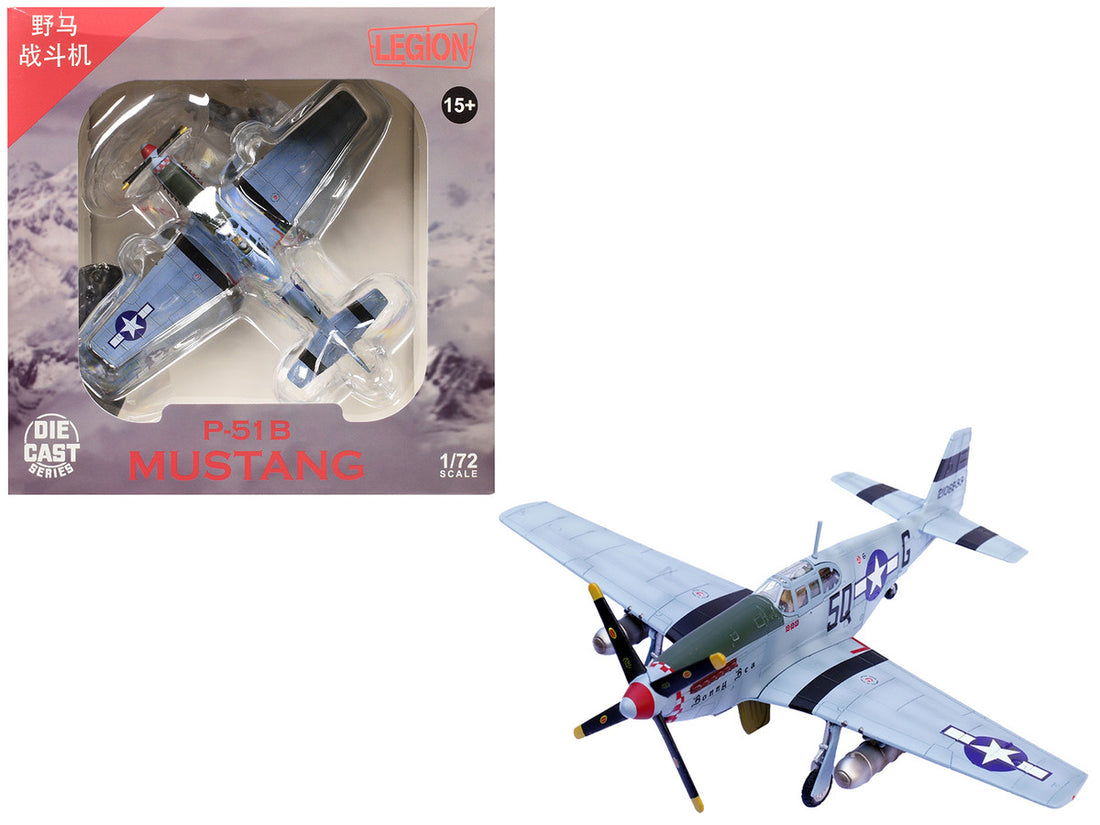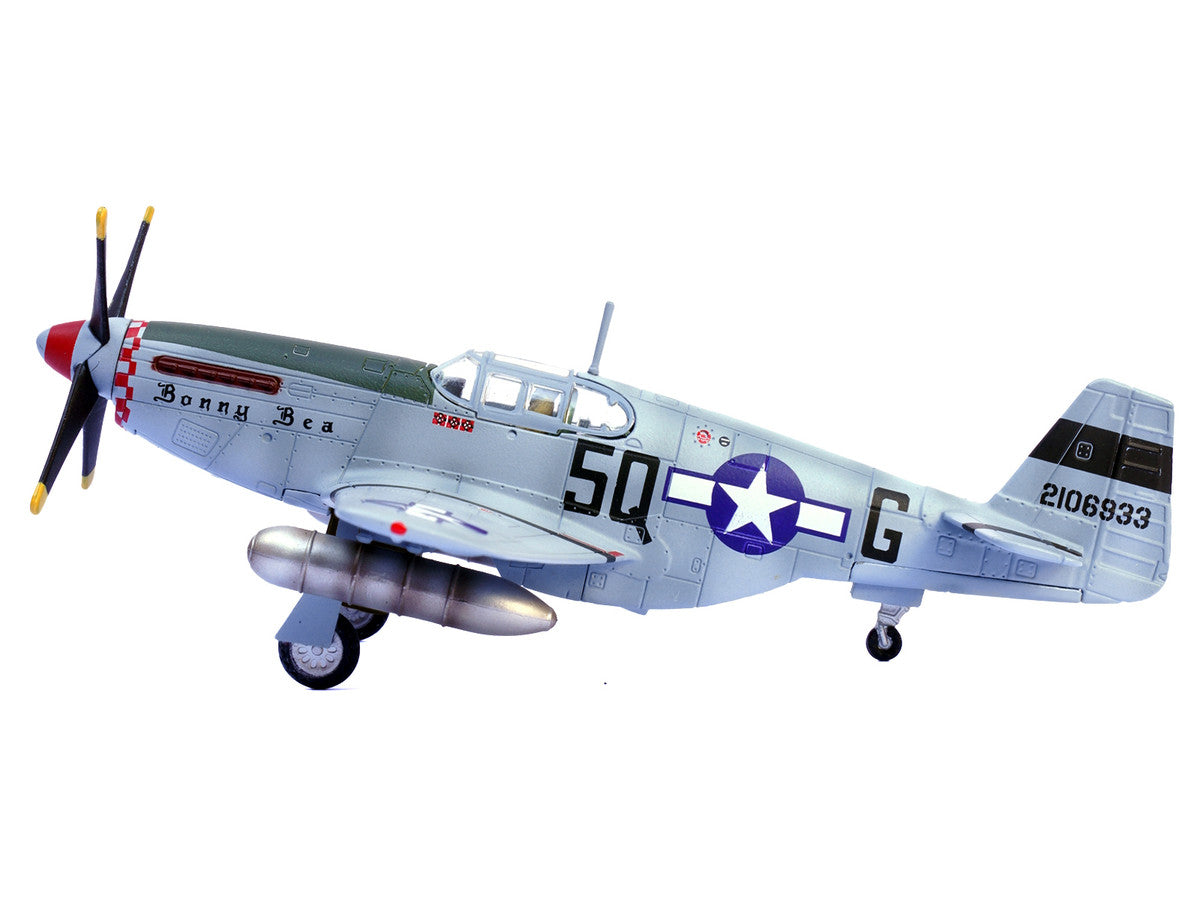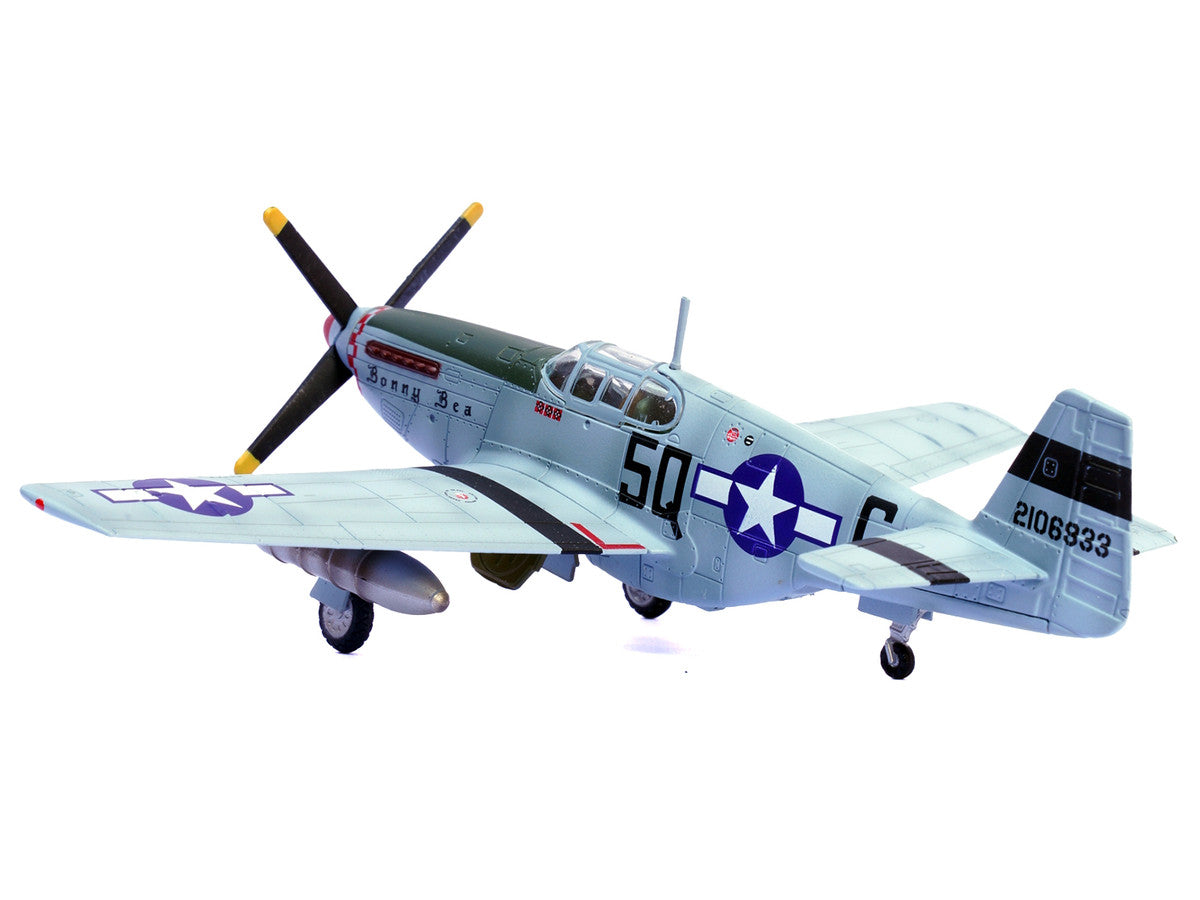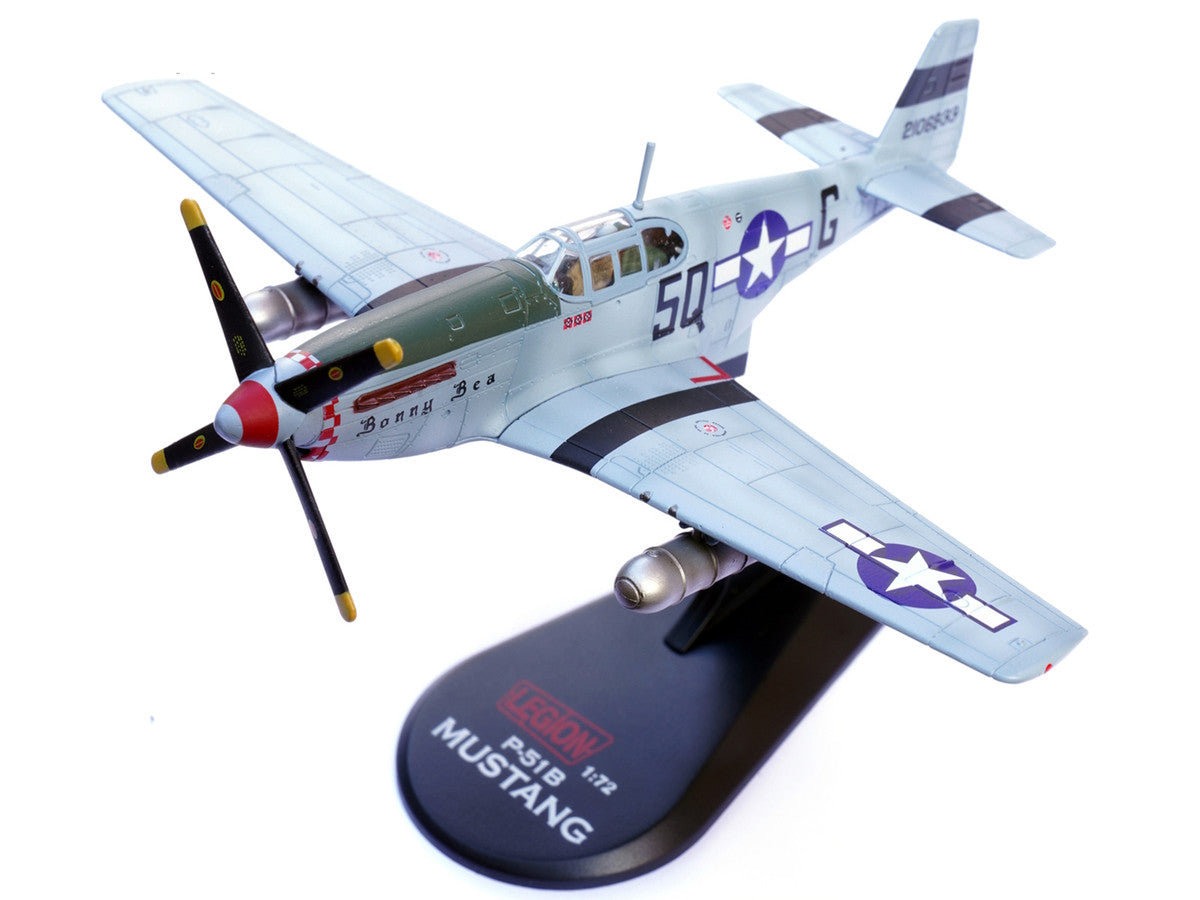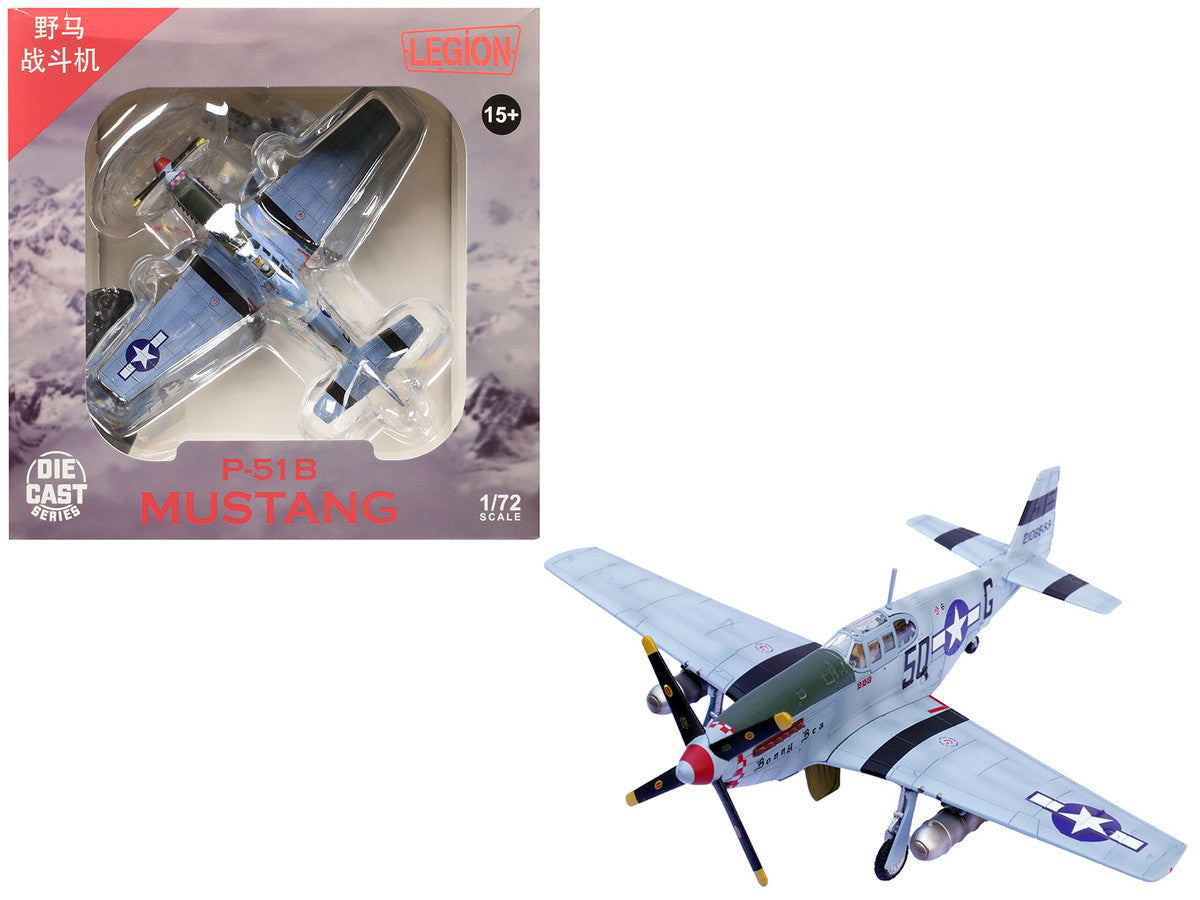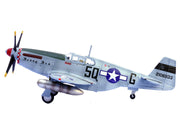
North American P-51B Mustang Aircraft "Bonny Bea 504th Fighter Squadron 339th Fighter Group" (1944) United States Army Air Forces 1/72 Diecast Model Airplane by Legion
$67.99
Le enviaremos un correo electrónico para restablecer su contraseña.
Couldn't load pickup availability
Vendor: Legion
Type: Aircrafts and War Planes
Sku: LEG-14606LC

HISTORY ASPECTS:
The North American P-51B Mustang "Bonny Bea," flown by Captain Lee "Dutch" Eisenhart of the 504th Fighter Squadron, 339th Fighter Group, played a significant role in the aerial combat operations of World War II. Based at RAF Fowlmere in England, the 339th Fighter Group became operational in early 1944, tasked with providing bomber escort and conducting fighter sweeps deep into enemy territory. The introduction of the P-51B Mustang, with its superior range and speed, allowed the 339th to protect Allied bombers all the way to strategic targets within Germany, effectively countering the Luftwaffe's attempts to disrupt the Allied bombing campaign.
Captain Lee "Dutch" Eisenhart, flying "Bonny Bea," quickly distinguished himself as a skilled pilot and leader. The Mustang's advanced performance, powered by the Packard-built Rolls-Royce Merlin engine, gave Eisenhart and his fellow pilots a significant edge in combat. With its long-range capabilities, "Bonny Bea" participated in some of the most critical missions of the European Theater, including the escort of B-17 Flying Fortresses and B-24 Liberators during deep penetration raids over industrial targets like ball-bearing factories, oil refineries, and aircraft production facilities. These missions, often met with fierce resistance from the Luftwaffe, were pivotal in reducing the German war machine’s ability to sustain itself.
Throughout 1944, the 339th Fighter Group's missions intensified, and Capt. Eisenhart, with "Bonny Bea," saw significant action in several key operations. During these engagements, Eisenhart achieved numerous aerial victories, showcasing his adeptness in dogfighting and tactical prowess. "Bonny Bea" became a symbol of the determination and skill of the 504th Fighter Squadron as they engaged in both offensive and defensive operations. The success of the 339th Fighter Group in protecting bombers and striking enemy aircraft was critical in establishing Allied air superiority, a decisive factor in the lead-up to the D-Day landings and the eventual push into Nazi-occupied Europe.
With its accurate historical decals and meticulous craftsmanship, this 1:72 scale model is a must-have for collectors and history enthusiasts alike, offering a tangible piece of aviation history that pays tribute to the courage and skill of the pilots who flew these iconic aircraft into battle.


